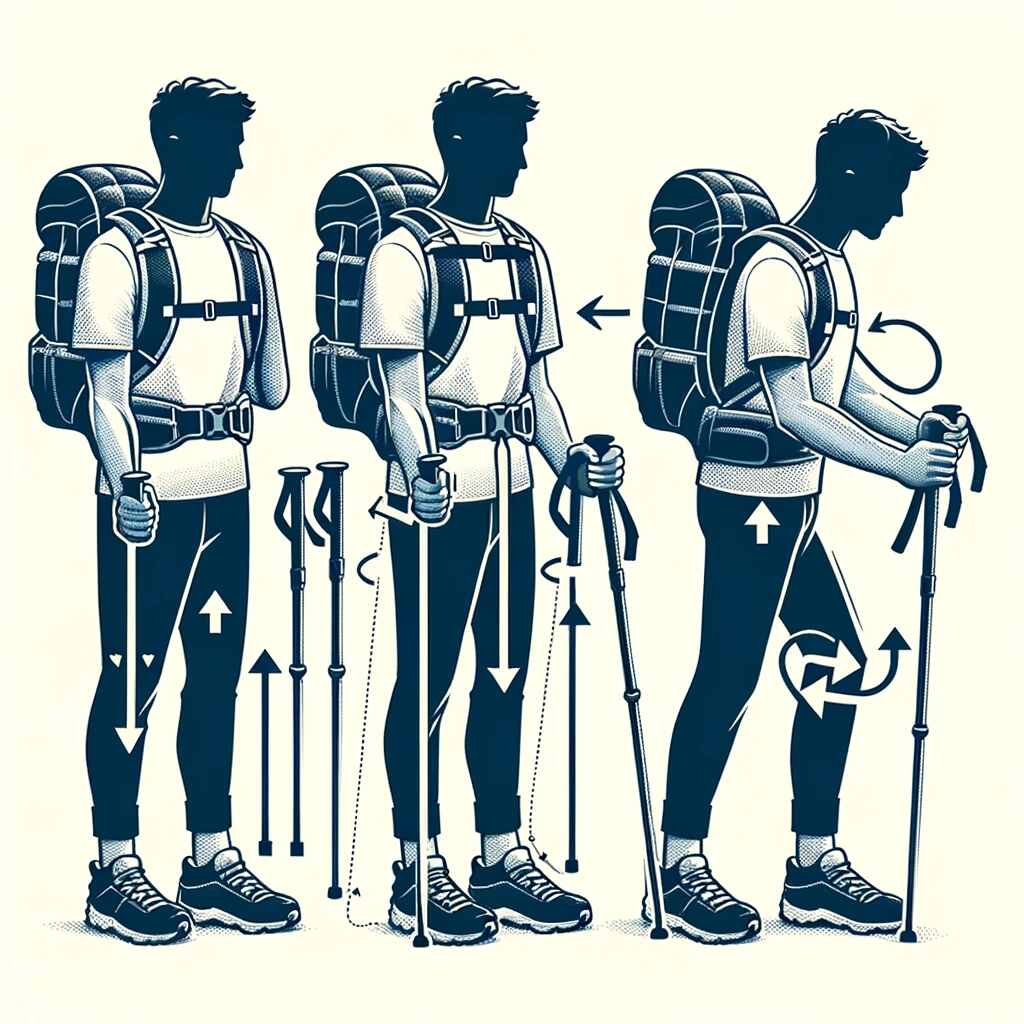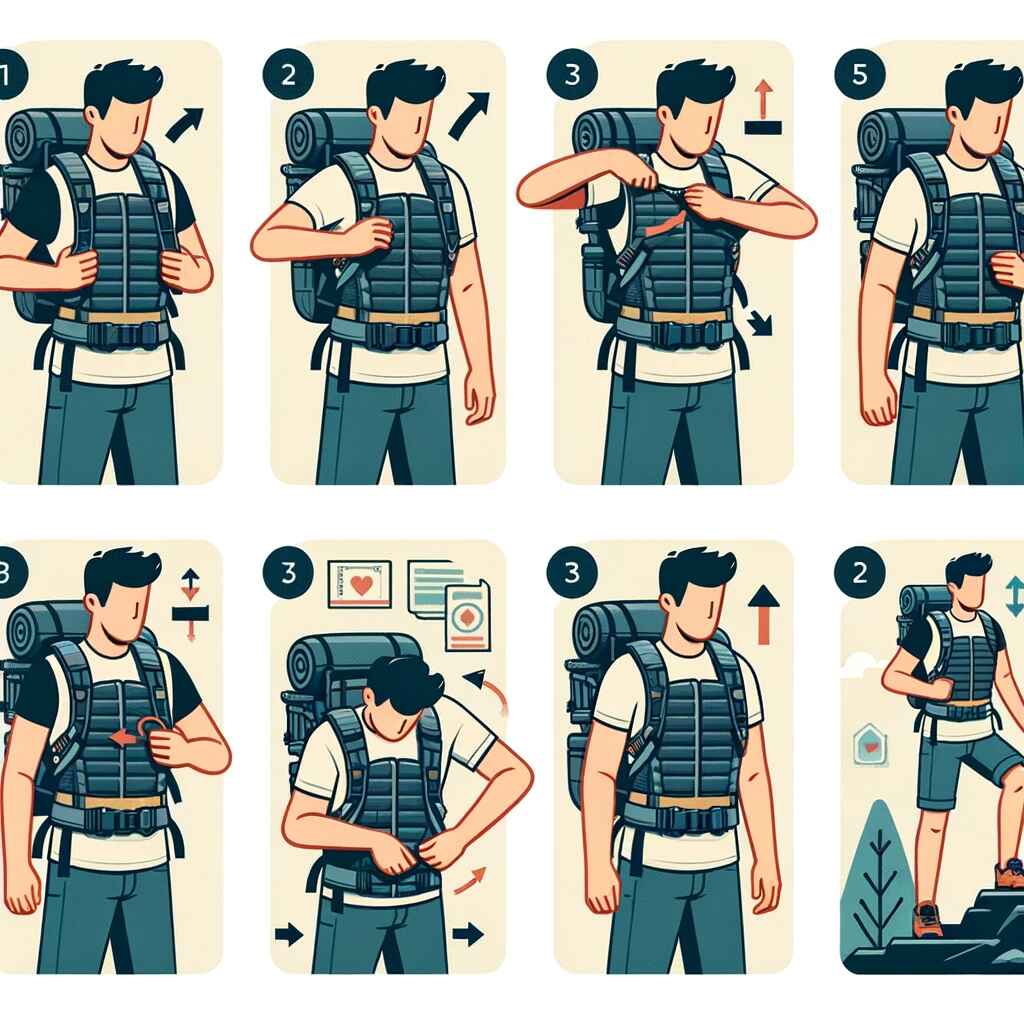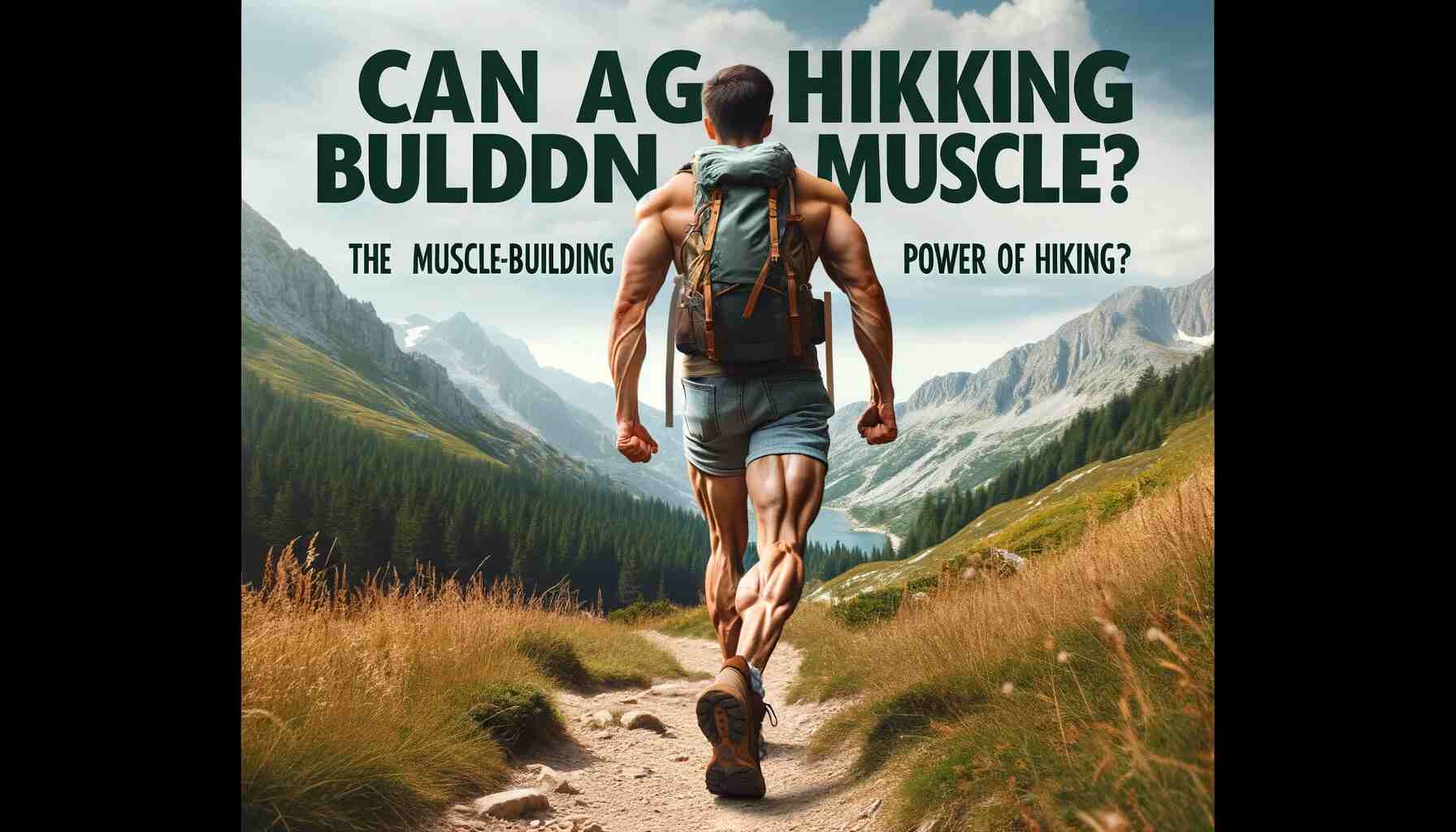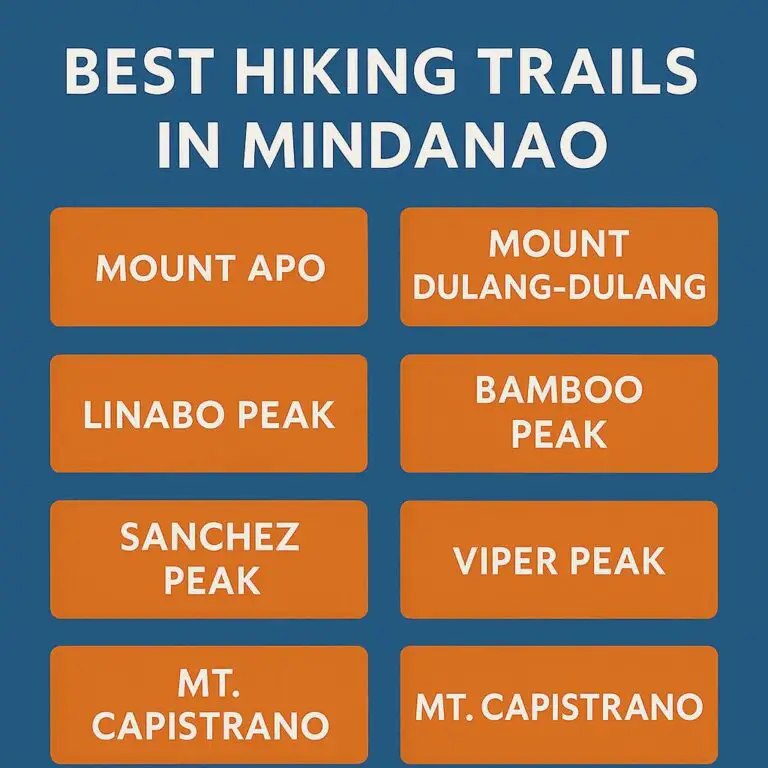Hiking is more than just a leisurely stroll through nature; it can be a potent tool for building muscle and improving overall fitness. Many fitness enthusiasts and outdoor adventurers are increasingly turning to hiking as a means of achieving their muscle-building goals while enjoying the beauty of the great outdoors. But does hiking really build muscle, and how effective is it compared to traditional gym workouts and other exercise routines?
Hiking can build muscle, primarily targeting the legs, core, and upper body to some extent. However, it may not be as effective as traditional gym workouts for significant muscle gain.
In this comprehensive guide, we will explore the muscle-building potential of hiking, uncover the key factors that influence its effectiveness, and provide you with actionable tips to maximize your muscle gains through hiking.

Does Hiking Build Muscle? – YES! But…
Before we delve deeper into the muscle-building benefits of hiking, let’s address the burning question: Does hiking build muscle? The answer is a resounding yes, but it comes with a few important caveats.
Muscle Groups Involved in Hiking
Hiking is an excellent full-body workout that engages several muscle groups:
1. Leg Muscles (Quite a bit): The primary leg muscles involved in hiking are the quadriceps, hamstrings, and calf muscles. The uneven terrain and inclines of hiking trails demand the use of these muscles for stability and propulsion.
- Quadriceps: Located at the front of the thigh, these muscles extend your leg when you take a step.
- Hamstrings: Situated at the back of the thigh, hamstrings are responsible for bending your knee.
- Calf Muscles: Found at the back of your lower leg, calf muscles push off the ground when you take a step.
2. Core Muscles (Moderate): Hiking also engages core muscles, including the abdominal muscles, lower back muscles, and hip abductors. These muscles play a crucial role in maintaining balance, posture, and energy transfer from the lower body to the upper body.
3. Upper Body Muscles (Not Much): While hiking does involve some upper body muscles, such as the shoulders and upper back, it’s not a primary strength-building activity for the upper body. This aspect makes it an excellent low-impact exercise.
While hiking can effectively target these muscle groups, it may not be enough to build significant muscle mass on its own. To see substantial muscle growth, you should complement your hiking routine with other forms of exercise and maintain a proper diet. Hiking serves as an excellent foundation for muscle maintenance, recovery periods, injury rehabilitation, and mental health benefits.

Tips for Hiking to Build Muscle
If you’re looking to harness the muscle-building power of hiking, here are some valuable tips to help you make the most of your outdoor adventures:
1. Increase Intensity Gradually: To build muscle effectively, challenge your body progressively. Begin with shorter hikes on relatively easy terrain and gradually increase the intensity over time. This gradual progression will help you build strength and endurance without risking injury.
2. Consider a Weighted Vest: Elevate the intensity of your hikes by using a weighted vest. These vests distribute weight evenly and don’t hinder your movements, making them a perfect addition to your hiking gear. Start with a lighter weight and progressively increase it as you become stronger.
3. Mix Up Your Speed: Muscle growth thrives on variation. Incorporate speed variations into your hikes, alternating between slower, steady walking and faster, more intense bursts. This variation challenges your muscles in different ways, promoting better results.
4. Focus on Aerobic Exercise: While hiking can build muscle, it’s essential to balance your routine with aerobic exercise to improve overall fitness. Consider adding activities like running, biking, or swimming to complement your hiking regimen.
5. Work on Your Stability: Strengthen your core and pelvic muscles to enhance balance and stability during hikes. This not only reduces the risk of injury but also promotes more effective muscle development.
6. Avoid Sitting for Long Periods: Prolonged sitting can weaken your muscles, hindering your muscle-building progress. Stay active throughout the day to keep your muscles engaged and effective during your hikes.

Hiking With A Weighted Vest: Supercharged Workout
To take your hiking workouts to the next level and maximize muscle growth, consider hiking with a weighted vest. Weighted vests are wearable resistance tools that add extra weight to your body, increasing the intensity of your hikes. Here’s how to make the most of this supercharged workout:
1. How to Use a Weighted Vest for Hiking:
- Ensure the vest fits snugly and comfortably.
- Start with a light weight, typically 5-10% of your body weight.
- Gradually increase the weight as you become stronger and more comfortable.
2. Benefits of Hiking with a Weighted Vest:
- Increased calorie burn: The added weight creates resistance, resulting in more calories burned during your hike.
- Improved endurance: Hiking with a weighted vest strengthens muscles and enhances cardiovascular endurance, allowing you to hike longer distances.
- Increased muscle mass: A weighted vest intensifies the leg, glute, and core workouts during hiking, contributing to muscle development.
- Improved bone density: Hiking with a weighted vest is also beneficial for those with osteoporosis, as it helps enhance bone density.
Weighted Vest vs. Rucking:
While both hiking with a weighted vest and rucking (carrying a weighted backpack) are effective ways to add resistance to your hikes, they have distinct differences. The choice between the two ultimately depends on personal preference and fitness goals.
How Hiking Builds Muscle
Hiking’s muscle-building potential lies in its unique combination of factors:
1. Effect on Lower Body:
Hiking on uneven terrain engages your leg muscles to maintain balance and stability. The inclines and declines of the trail add resistance, contributing to muscle strength and size. As you hike more frequently, your muscles adapt to the demands of the activity, resulting in increased muscle mass and hypertrophy.
2. Impact on Core and Upper Body:
While hiking primarily targets lower body muscles, it also engages the core and upper body muscles to a lesser extent. Core muscles, including abs and lower back, play a crucial role in maintaining balance and stability. Your arms and shoulders provide support and balance during climbs and descents.
3. Role of Resistance and Intensity:
The resistance offered by hiking on uneven terrain triggers micro-tears in your muscles, stimulating muscle growth and hypertrophy. The intensity of your hike, influenced by factors such as pace and terrain, plays a vital role in muscle activation and growth.
While hiking can effectively build and tone muscles, incorporating resistance training, such as weightlifting or bodyweight exercises, into your fitness routine can further enhance muscle size and strength.
Role Of Terrain And Hiking Equipment
The terrain you choose for your hikes and the equipment you use can significantly impact muscle-building during hiking. Consider the following factors:
1. Effect of Inclines and Descents:
Hiking on inclines and descents provides an excellent leg workout. Uphill hiking requires more effort from your quadriceps, hamstrings, and glutes, while downhill hiking engages your calves and shins. Descending on steep terrain can be especially challenging, placing increased strain on your joints due to gravity. Proper footwear is essential for protecting your toes when hiking downhill.
2. Benefits of Trekking Poles:
Trekking poles serve as valuable tools for muscle-building hikes. They engage your arm muscles, particularly the biceps and triceps, while providing support and stability on uneven terrain. Trekking poles can also help maintain balance during inclines and descents, reducing strain on leg muscles.
When choosing trekking poles, consider factors like length and material. The poles should offer sufficient support without becoming unwieldy. Materials like aluminum or carbon fiber provide durability and reduce weight.
Cardiovascular And Endurance Benefits
Hiking offers substantial cardiovascular and endurance benefits, contributing to your overall fitness. As you hike, your heart rate increases, prompting your body to deliver more oxygen and blood to your muscles. These physiological responses improve your cardiovascular endurance and fitness.
According to a study in the American Journal of Lifestyle Medicine, hiking can reduce the risk of heart disease by enhancing cardiovascular health. It can lower blood pressure, reduce cholesterol levels, and improve overall cardiovascular fitness. To maximize these benefits, maintain a brisk pace during your hikes, and keep your heart rate elevated.
Nutrition And Rest For Muscle Growth
Building muscle through hiking requires proper nutrition and rest. Here are essential considerations:
1. Importance of Protein and Diet:
Protein is vital for muscle growth and repair. When you hike, your muscles undergo micro-tears that necessitate repair. Protein provides the essential building blocks for this repair process. Incorporate protein-rich foods like lean meats, beans, nuts, and dairy products into your diet. Ensure your diet is well-balanced, with adequate carbohydrates for energy and healthy fats for hormone production and nutrient absorption. Consume enough calories to support your hikes and muscle growth.
2. Role of Sleep and Recovery:
Rest is critical for muscle growth. During sleep, your body releases growth hormones that aid in muscle repair and development. Aim for 7-9 hours of quality sleep each night to maximize muscle growth. Additionally, prioritize recovery between hikes by taking rest days and engaging in active recovery activities like stretching or yoga to promote blood flow and reduce soreness.
Recovery for Sore Calves:
Sore calves are a common issue for hikers. To facilitate recovery, stretch your calves before and after your hike. Consider foam rolling or massage to alleviate soreness. Implement rest days between hikes to allow your calves to recover fully.
Dealing with Plantar Fasciitis:
Plantar fasciitis, a painful foot condition, can be exacerbated by hiking. To prevent it, wear supportive shoes and perform foot stretches before and after your hike. If you experience plantar fasciitis symptoms, rest, apply ice, and seek professional treatment if necessary.
Hiking Vs Gym And Other Exercises
Comparing hiking to traditional gym workouts and other exercises provides valuable insights into its muscle-building potential:
1. Comparison with Weightlifting:
While weightlifting is highly effective at building muscle mass, hiking offers a unique blend of strength and endurance training that is less prone to musculoskeletal injuries. Weightlifting involves targeting specific muscle groups with weights or machines, while hiking engages multiple muscle groups in a low-cost and accessible manner. Combining hiking with resistance training provides a holistic approach to muscle building and overall fitness.
2. Hiking vs Running:
Hiking and running both engage similar muscle groups but with distinct differences. Running is higher impact and can stress joints and muscles, whereas hiking is low-impact and gentler on the body. Hiking offers similar cardiovascular benefits to running while reducing the risk of injury.
Additional Health Benefits Of Hiking
Beyond muscle building, hiking offers a plethora of other health benefits:
1. Mental Health:
Hiking provides a natural remedy for reducing stress and anxiety. Spending time in nature and away from the hustle and bustle of daily life can clear your mind and elevate your mood. Research published in the International Journal of Environmental Research and Public Health even suggests that hiking can alleviate symptoms of depression, with a more pronounced positive effect on women.
2. Balance and Posture:
Hiking on uneven terrain enhances balance and posture. Constant adjustments to varying terrain strengthen core muscles and improve overall stability, particularly beneficial for older adults at risk of falls.
3. Spine Health:
Walking on uneven terrain can promote spinal movement and reduce the risk of back pain, making hiking an excellent choice for those with chronic back issues.
4. Other Health Benefits:
Hiking offers a range of additional health benefits, including lowering blood pressure, improving sleep quality, boosting the immune system, reducing the risk of heart disease and stroke, and increasing bone density.

Final Verdict: Best Way To Build Muscle While Hiking – Weighted Vest
To conclude, hiking is indeed a potent tool for building muscle, targeting various muscle groups, and improving overall fitness. However, it may not be the most efficient method for significant muscle mass gain. For the best results, consider incorporating resistance training exercises into your fitness routine alongside hiking.
For those seeking to maximize muscle growth during hikes, using a weighted vest is a game-changer. Weighted vests provide resistance, enhance calorie burn, improve endurance, and increase muscle activation. When used correctly, they can supercharge your hiking workouts and help you achieve your muscle-building goals while enjoying the great outdoors.
Frequently Asked Questions
1. What kind of body does hiking give you?
Hiking can help tone and strengthen muscles, particularly in the legs and glutes. However, it may not necessarily result in a bodybuilder physique. Hiking primarily provides cardiovascular benefits and overall fitness.
2. What muscles are developed by hiking?
Hiking engages various muscle groups, including the quadriceps, hamstrings, calves, core muscles, and upper body muscles. While it’s effective for muscle toning and strength, significant muscle mass gain may require additional forms of exercise.
3. Can hiking make you physically fit?
Yes, hiking can improve physical fitness by enhancing endurance, strength, and flexibility. It can also reduce the risk of chronic diseases like heart disease and diabetes.
4. What are hiker legs?
“Hiker legs” refer to the toned and muscular legs that many hikers develop due to the physical demands of hiking. The repetitive uphill and downhill movements contribute to muscle development in the legs.
5. How does hiking affect muscle growth?
Hiking stimulates muscle growth by engaging various muscle groups, especially in the legs and core. The resistance provided by uneven terrain and the intensity of the hike contribute to muscle development over time. However, supplementing with resistance training can further enhance muscle growth.
In conclusion, hiking is a fantastic way to build muscle and improve your overall fitness. It engages multiple muscle groups, offers numerous health benefits, and provides an opportunity to connect with nature. While hiking alone may not result in bodybuilder-level muscle mass, it can be a valuable component of a well-rounded fitness routine. Whether you’re a seasoned hiker or new to the trails, you can enjoy the muscle-building power of hiking while exploring the great outdoors. So, grab your hiking boots, hit the trails, and embark on a journey to stronger, healthier muscles through the beauty of nature.








